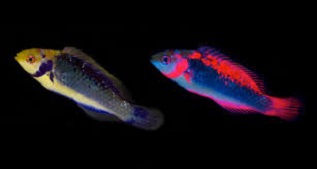Many fish species glow red and can see red light, even at depths where the red part of the sunlight spectrum has been absorbed by the water above. It was long assumed that red light did not play a role at depths of 10m or more. Professor Nico Michiels has not only discovered and investigated the phenomenon of red fluorescence; he and his team have now described a new detail which offers important clues to the function of glowing red.
The researchers examined eight different fluorescing fish species from locations as diverse.
The comparison of individuals within a species caught at different depths (5m and 20m) at a single location yielded an unexpected result — much stronger fluorescence at greater depths in six out of eight species.
The researchers tested the popular hypothesis that fluorescing protects the fish from ultraviolet rays — as it does for corals which grow close to the surface and are exposed to strong sunlight. “We cannot completely exclude this function in fish, but it seems unlikely that UV protection has played much of a role in the evolution of red fluorescence,” says Nico Michiels. UV radiation is much greater in shallow water, and if protection from the ultraviolet was important, the researchers would have expected fish living closer to the surface to emit greater red fluorescence — the opposite of what they found.
This suggests a different theory — that the fish illuminate their surroundings with red light to strengthen contrasts and see better. The researchers will now investigate exactly how the fish use the light. “If it is the eyes which produce the fluorescence, it could be used to discover hidden prey,” says Michiels.
Source: Science daily
N.H.Kh

